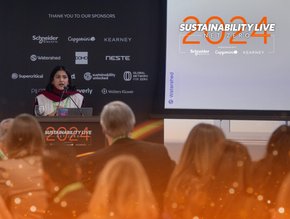Oracle: Three paths to efficiency across project delivery

Businesses across all sectors are facing an unpredictable economic environment. This creates multiple challenges for asset-intensive organisations, leading to a “Survive – Sustain – Predict” mindset. An obvious initial response is to cut costs but that could leave companies well behind the curve for the next upward growth phase.
The current situation facing asset intensive organisations such as energy businesses highlights the critical role that capital planning/portfolio management plays in controlling costs and improving efficiencies. It also ensures the appropriate prioritisation of projects that will deliver longer-term strategic value.
Utilisation of a robust capital planning/portfolio management solution enables energy providers to review their capital assets across the entire portfolio to make sure they’re set up to deliver on the power needs of today, and the future. From empowering employees with better project management, minimising risk during dreaded outage events, and managing decommissioning projects, technology will sit at the heart of any positive change.
Power to the people with project management
Project management is often lamented as one of the biggest inhibitors to energy site efficiency. Projects can become weighed down by dozens of key documents, spread across a variety of key stakeholders and disparate divisions.
Technology that can provide full visibility on project data, regardless of location, is critical to working more productively. Gone are the days when IT teams would be forced to manually install software on individual staff members’ computers or laptops – the cloud has given workers access to real-time project information anytime, anywhere.
This also gives energy site operators real-time visibility and control across all grid and pipeline assets, on a single platform, which means workers can deliver quality project schedules, maximise resource capacity and minimise project risks.
Solving the STO dilemma
Across the energy industry, STO events often are not optimally managed, making them a needlessly high contributor to a site’s non-availability, risk level, and cost. A typical item list, which traditionally runs at about 3,000 separate items, can quickly escalate into 150,000 individual jobs, or tasks – each with its own stakeholders, compliance requirements, and third-party suppliers. Frustratingly, 68% of organisations still fail to deliver STO events to time and budget, 95% of the time[1].
Technology is critical to effectively support outage management, tracking fundamental activities and deadlines during each phase of the outage via monitoring systems. It also makes it infinitely easier to ensure management buy-in with automated scope capture, challenge, and approval processes. For a utility business, scope is sacred, so they need to ensure they’re mapping any approved changes back to the initial and agreed upon business objectives.
Taking a holistic approach to data management is another way to execute STO events more effectively. A centralised platform for project management means teams from across the organisation can fastidiously track their work in more collaborative manner.
For example, possessing the ability to oversee scope across its entire lifecycle — including all estimates, reviews, approvals and any changes to the overall scope regarding resources and schedule — means all stakeholders involved, especially management, can make effective decisions.
Most crucially, these integrated tools can be applied quickly, with minimal disruption, and start delivering almost immediate gains.
Own decommissioning projects
For any energy company, global competition and volatile markets have resulted in a challenging climate for providers, with the delivery of projects and milestones on time and budget proving a tricky task to manage. Extraordinarily, only around 23% of utility companies have a plan in place for decommissioning their assets[2], so it is critical managers possess visibility into the resource workload across all projects in order to establish effective procedures.
Again, centralised data repositories are key – essentially playing the part of an extremely sophisticated knowledge management tool, capturing and storing the information needed for decommissioning. What’s more, with this real-time access and visibility, risk information can be fed seamlessly into project plans, meaning internal and external stakeholders can look ahead and uncover potential issues before they compromise any decommissioning work.
As our cities become smarter – with the rise of electric cars, smart devices and connected hubs – the demand for energy will only increase. Last year saw a 3.7% spike in energy production in the UK[3], an increase for the fourth successive year. As a result, there will be growing pressure on the grid over the coming years which means utility companies that don’t act on the reliability of their site now and start adopting the right technologies, will risk suffering in the near future.
[1] https://www.mckinsey.com/industries/capital-projects-and-infrastructure/our-insights/reinventing-construction-through-a-productivity-revolution
[2] http://www.oracle.com/us/products/applications/primavera/decommissioning-utilities-kb-3102576.pdf
[3] https://assets.publishing.service.gov.uk/government/uploads/system/uploads/attachment_data/file/791297/Press_Notice_March_2019.pdf






